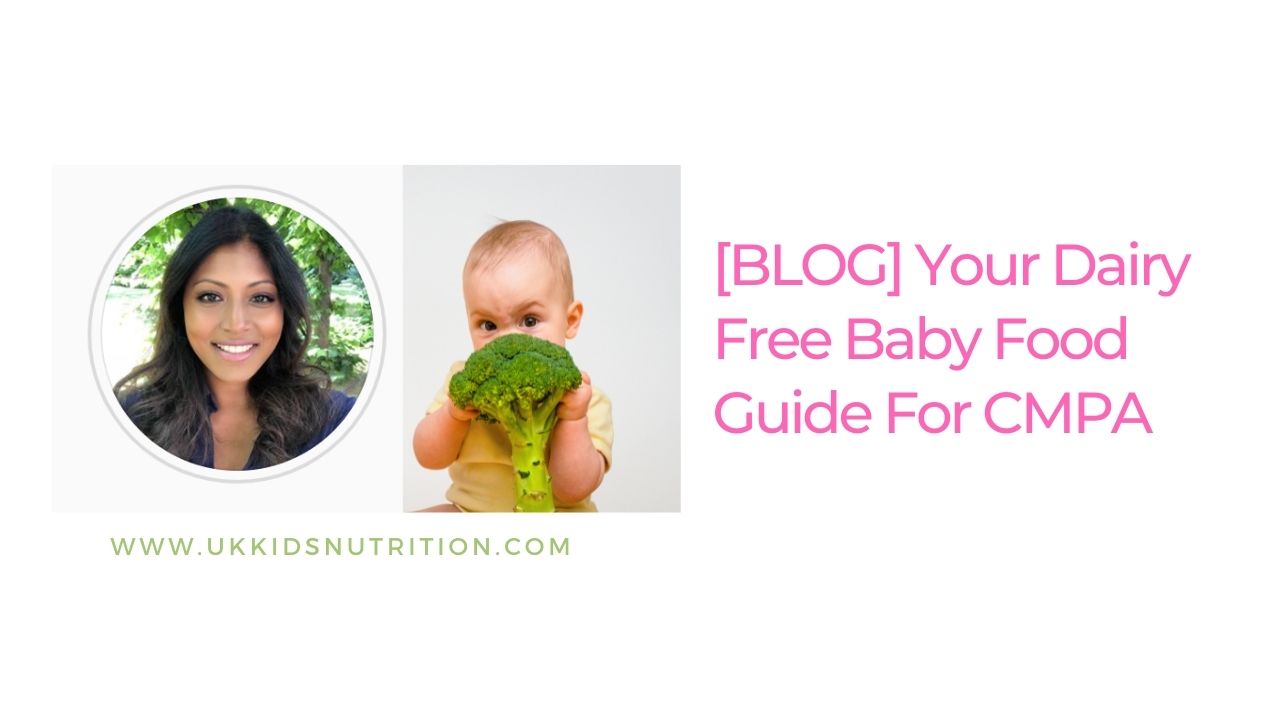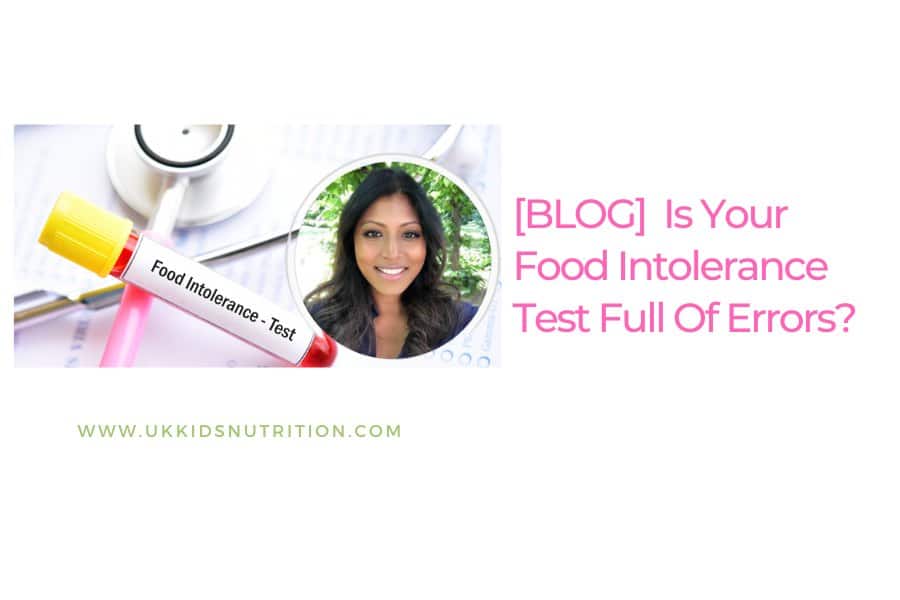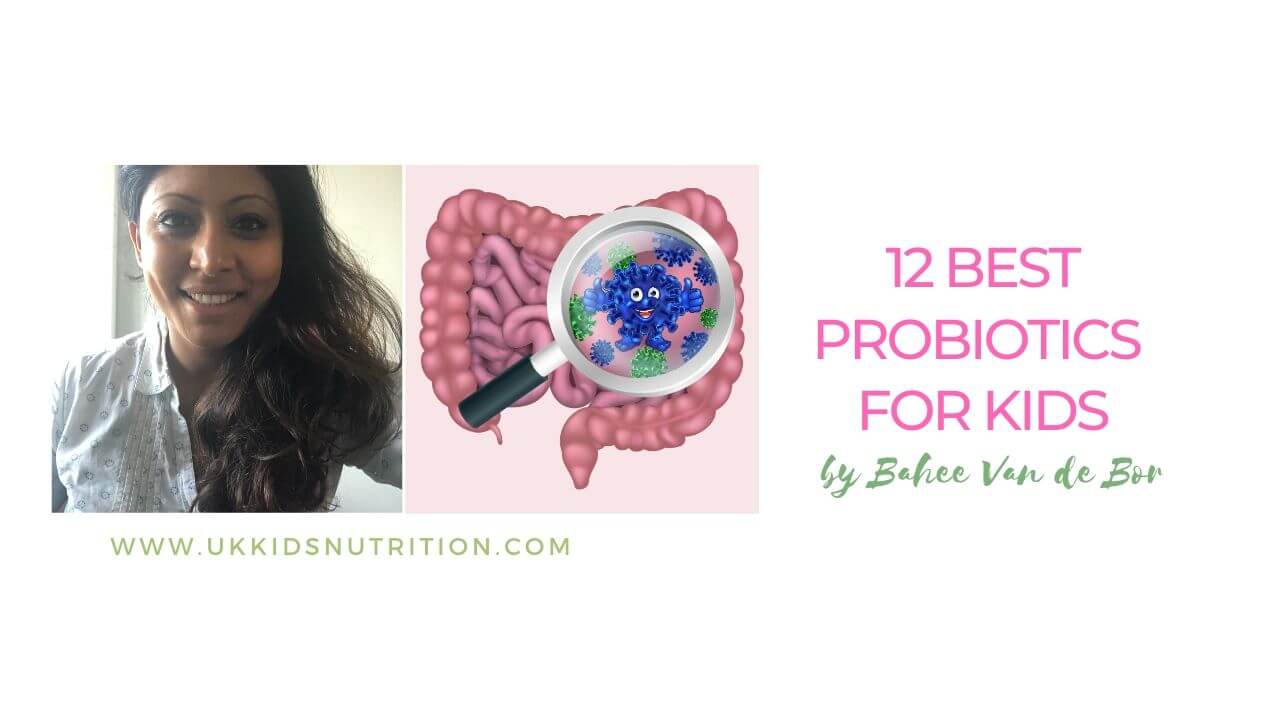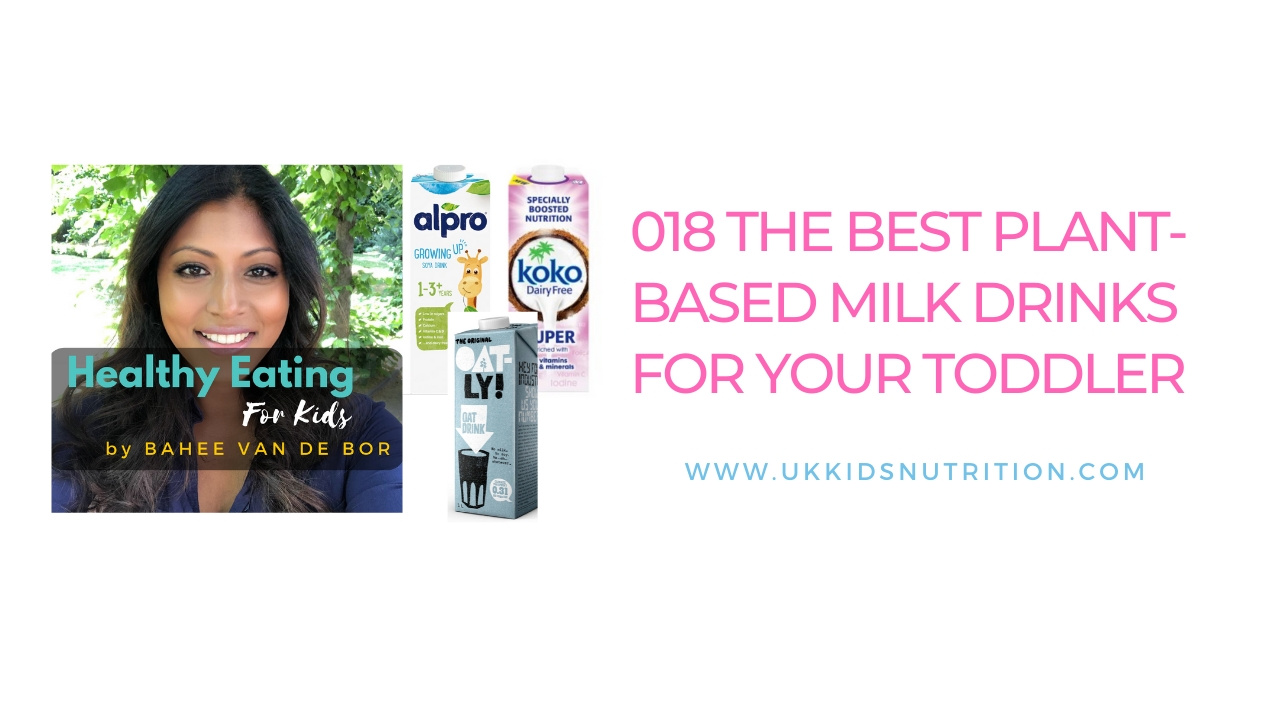Your baby has been diagnosed with cow’s milk protein allergy (CMPA) and you need help planning dairy-free baby food.
You have started solids but you are not sure how to plan the rest of their dairy-free diet.
If you are looking for help planning a milk-free diet for your baby, then this article will take you through the main dairy-free baby foods that you should include.
You’ll also learn what to avoid when planning dairy free weaning and helpful dairy-free alternatives to consider for your dairy-free baby’s diet.
What is cow’s milk protein allergy?
Approximately 3-4% of children are diagnosed with cow milk protein allergy in the UK.
In these children, their immune system reacts to the proteins found in cow’s milk and dairy products.
Although there are two types of dairy allergy (one being immediate and the other delayed or non-IgE mediated), in both scenarios your paediatrician and paediatric dietitian will recommend a dairy-free diet.
Most babies will also be prescribed a specialist infant formula.
If you are breastfeeding then you will be recommended to follow a dairy-free diet.
There is considerable debate about whether cow’s milk proteins from a mother’s diet cross over to breast milk.
If your baby has been diagnosed with cow’s milk protein allergy despite breastfeeding, then both you and your baby will be recommended to follow a strict dairy-free diet.
What about lactose intolerance?
The good news is that the most common type of lactose intolerance in babies is usually transient.
Your baby may temporarily struggle to digest the milk sugar called lactose.
This usually occurs after an acute period of gastroenteritis, in undiagnosed coeliac disease or after surgery.
Once your baby’s gut recovers, he/she will be able to fully digest and tolerate lactose and dairy foods.
Note that lactose intolerance is very different from milk allergy.
The latter is the body’s abnormal allergic reaction to the proteins found in milk.
Learn more about lactose intolerance and dairy allergy in this interview with my client Rose and her daughter Sadie.
See Lactose Intolerance and Dairy Allergy – What You Need To Know
Note that there are other types of lactose intolerance.
You are can read more about the different types of lactose intolerance on the NHS website on causes of lactose intolerance.

What to feed dairy free baby
When first planning dairy-free weaning, you don’t need to do anything differently.
You can start with vegetables and fruit as you would with any other healthy baby.
Some babies may be recommended to start weaning at 4 months.
Your allergy specialist doctor may also recommend including eggs and peanuts once your baby has been fully established on weaning foods.
As you gradually expand on your baby’s range of solids, here are my suggestions for everyday dairy-free baby foods.
Dairy-free baby cereal
When you are ready to add breakfast to your baby’s weekly menu, here are a couple of dairy-free baby cereals that you might want to stock.
Oats
Oats are brilliant as they are rich in fibre.
They are also rich in the type of fibre that can help relieve constipation in babies and toddlers.
Why not try the following recipes apple and cinnamon porridge or pear and chia powered oats?
Dairy-free baby rice
I would recommend oats and Weetabix over baby rice every time.
If you’d like to introduce rice to your baby, cook as usual and mash (particularly if it’s going to be one of the first dairy-free baby food after vegetables).
This way your baby can adjust to more complex textures sooner.
Are cheerios a good dairy-free baby food?
Cheerios are fortified with calcium, but it also contains added sugar.
Look out for tell-tale ingredients such as sugar, inverted sugar, molasses and caramelised sugar syrup.
Although it appears as a suitable milk-free baby food, this cereal is high in added sugar.
For that reason, it’s best avoided for children under the age of 2 years.
Consider other calcium-rich foods (keep scrolling to find out what these are).
Remember that for babies under 12 months of age, the majority of their calcium will be obtained from breast milk or their specialist infant formula.
If you are breastfeeding, you will need a calcium supplement.
You can find out more about calcium-rich foods in ‘What You Need To Do Before Reaching For Calcium Supplements’.
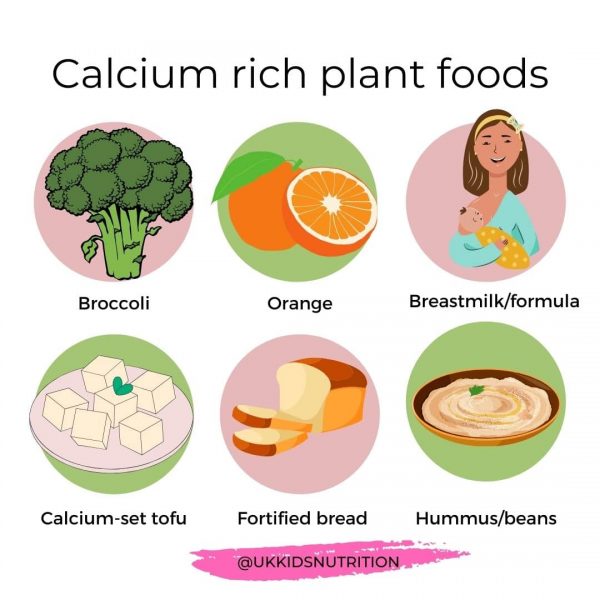
Calcium-rich foods
Broccoli
Broccoli contains roughly 45 mg of calcium per 100g.
The good news is that the calcium found in broccoli is absorbed well.
Steam, boil or stir-fry and offer it to your baby regularly.
Broccoli is an excellent first dairy-free baby food as it can be offered as a finger food for babies older than 6 months of age.
Okra
Okra is another fantastic source of plant-based calcium that you can add to your casserole, curries and stir-fries.
It contains a whopping 220mg calcium per 100g so it’s worth remembering this vegetable regularly during weaning at 4 months and onwards.
Okra is long and slender in shape.
This makes it an excellent finger food for babies over the age of 6 months.
Orange
You wouldn’t normally expect oranges to be a source of calcium so you might be surprised to learn that it contains around 40mg of calcium per 100g.
Once your baby starts finger foods, sliced orange pieces make excellent dairy-free baby food.
Tropicana Pure Premium orange juice is fortified with calcium but remember that it’s best to avoid giving your baby fruit juice.
Hummus
Hummus is made up of chickpeas and tahini which are both sources of calcium.
The absorption of calcium from sesame seeds is low however, it’s still a nutritious food that you can include regularly in your baby’s diet.
Hummus can also be served with sliced bread or rice cakes for a quick lunch.
This meal will also be a source of protein and fibre for a healthy gut.
Tofu
Look for calcium-set tofu which can be another useful way of hitting your child’s daily calcium targets.
For children on plant-based diets, tofu is a source of complete protein and also doubles up as an egg replacement in some dishes.
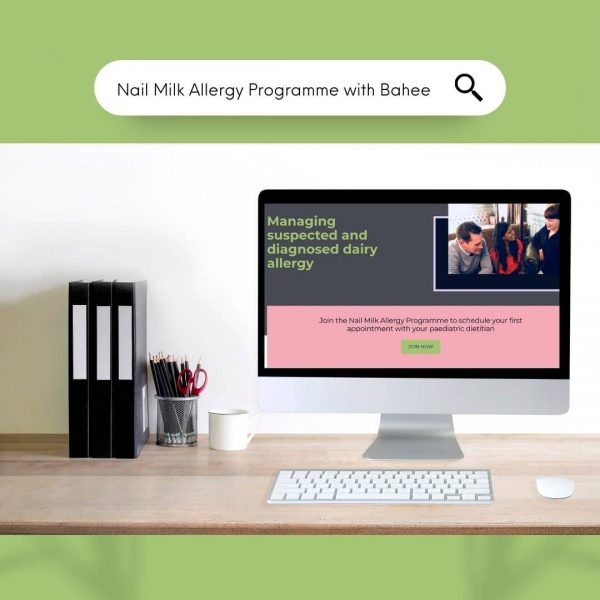
Useful dairy free baby snacks
Kingsmill Vitamin Boost bread
1 slice of bread will provide 150mg of calcium.
If your baby is starting finger foods, offer them a finger of toasted bread to munch on.
The good news is that in the UK, some types of wholemeal flour and most white flour used to prepare bread are fortified with calcium.
Look for words like calcium carbonate which means that the product contains calcium.
Baked beans
Baked beans contain around 53 mg calcium per 100g.
You can serve it with toast, rice cake or jacket potato for a meal or as a tasty snack for older children.
It’s also great to serve it directly on your baby’s plate or with toys for messy play activities.
Brazil nuts
Three brazil nuts contain about 17mg of calcium.
Whole nuts should not be offered to children under the age of five years as they can choke on them.
Instead, grind it and use it baking when your baby is over the age of 12 months.
Think dairy-free muffins with no added sugar.
You can use ground brazil nuts as a flour replacement (substitute a small amount of the ground nuts with an equivalent amount of the flour in the recipe).
You can view the full list of dairy-free snacks in 9 Nutritious Dairy Free Snacks For Toddlers.

Can baby have dairy free yoghurt?
They certainly can! There are a few things I recommend that you do when selecting the best dairy-free yoghurt for your baby.
Learn what the key nutrients are when choosing a yoghurt alternative in Dairy Free Yoghurt For Babies: Which One Is Best?
Can baby have dairy-free cheese?
Whilst there is no reason why your baby shouldn’t have dairy-free cheese, most plant alternatives are not calcium-fortified.
For this reason, I’m not a huge fan of dairy-free cheese alternatives for babies.
Although I generally don’t recommend these, it’s completely up to you and your personal circumstances.
You choose what works best for you as a family.
Baby allergic to milk and soy
If your baby is allergic to milk and soy then they will need to avoid soy foods like edamame beans and any other foods prepared with soy foods.
With the exception of tofu, you can offer most foods listed in this article for your baby on a dairy-free diet.
If you are starting dairy-free weaning for the first time and also need to avoid soy, simply make sure that you avoid any foods that also contain soy.
If you are not sure what these might be, consult with a paediatric dietitian.
Designing dairy free meal plan
To learn more about how to design a dairy-free meal plan for your baby or toddler read How To Design The Best Dairy Free Meal Plan For Toddlers.
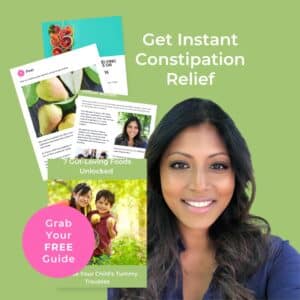
Bottomline
Starting dairy-free weaning can be exciting and easy when you remember to include some of the key dairy-free baby food that has been listed in this article.
When first establishing dairy-free weaning, start with fruit and vegetables like usual, but remember to consult with your paediatric dietitian on guidance on how to introduce high-allergenic foods like eggs and peanut. You’ll also need to incorporate calcium and iodine-rich foods when your baby’s intake of breastmilk or specialist infant formula starts to reduce.
Let Me Help
Would you like to meet a children’s dietitian who has successfully helped families solve their nutrition problems from around the world?
Whether you are worried about suspected dairy allergy, IBS, picky eating or need help for your child with constipation or diarrhoea, I’ll help you manage these with confidence.
For bookings and enquiries book a quick call for us to chat about how I can help you here.
